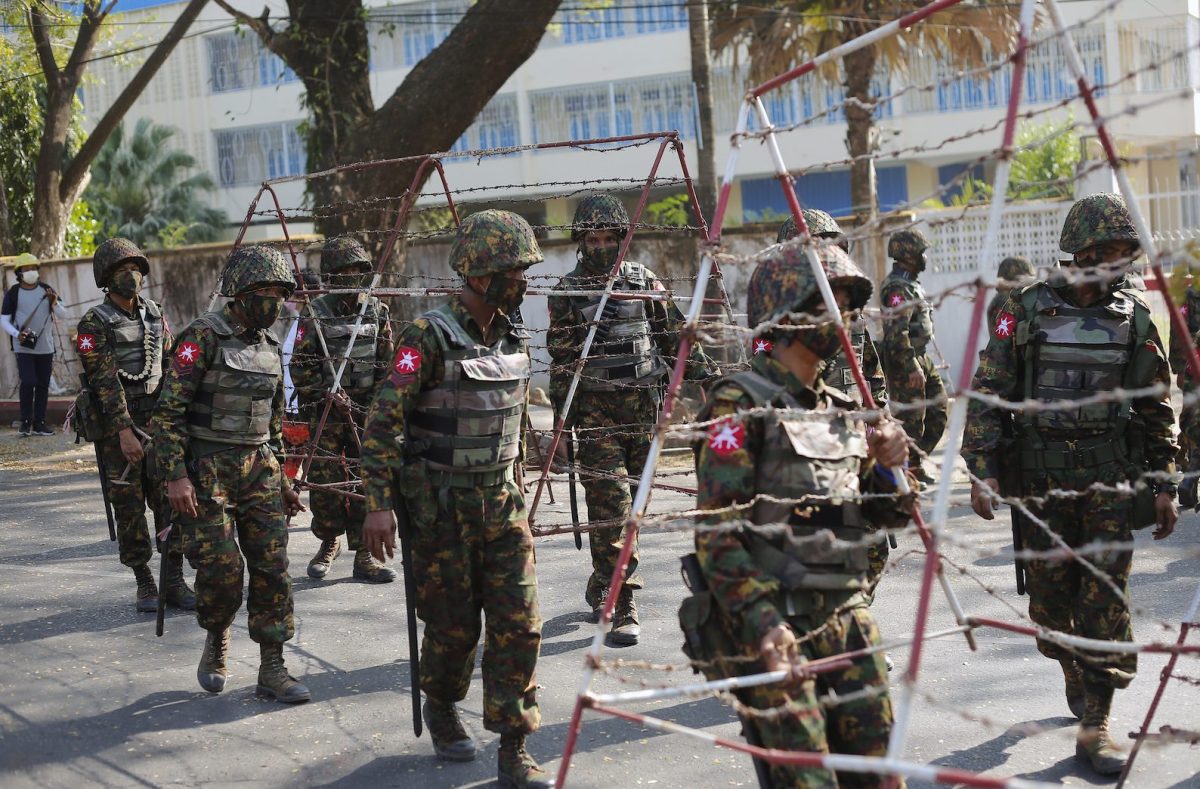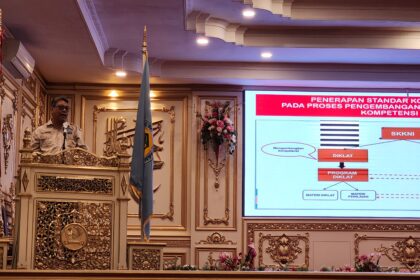[ad_1]
After the Myanmar military, or Tatmadaw, launched a coup d’état on February 1, many democratic countries responded with condemnations of the Tatmadaw leaders. Later, they united with Myanmar’s people by strongly urging the regime to relinquish its forceful rule, unconditionally release all detainees, and transfer power back to the elected civilian government led by the National League for Democracy (NLD).
The United States, for example, imposed targeted sanctions on the top military brass. The international community continues to pressure the Tatmadaw to comply with the people’s demands.Â
These demands, however, if implemented would only be a temporary remedy for the current political turmoil, rather than providing a real solution to Myanmar’s fundamental problem. That problem is the 2008 constitution drafted by the military junta then in place.
According to this constitution, Myanmar has never been a democratic country, despite the fact that it has had two elected governments – that of the United Solidarity and Development Party through the 2010 general election and that of the NLD through the 2015 general election. But it was still quasi-military rule.Â
However, the international community of elites have persuaded themselves that the arc of history within Myanmar bends toward democracy, ignoring ample evidence that, in fact, it bends whichever way the Tatmadaw wrenches it under the 2008 constitution. Other international observers, analysts, journalists and diplomats have bemoaned the fact that Myanmar’s democracy has been stolen.Â
All should understand that even if the Tatmadaw leaders accede to the demands made after the coup, Myanmar will again be locked in the trap of the 2008 constitution.Â
The following are some basic facts of the constitution, underscoring why Myanmar is a pseudo-democratic country that lacks many of the values, norms, and principles of democracy.
The constitution grants the Tatmadaw political influence and a veto position via a number of legal safeguards. First, it grants the military 25% of the seats reserved in the federal, state and regional legislatures (Sections 109-b, 141-b, and 161-d of Chapter IV: Legislature).Â
Second, according to Section 201 of Chapter V: Executive, the National Defense and Security Council (NDSC) is the most powerful body, consisting of 11 persons, including six members of the military (the commander-in-chief, the deputy commander-in-chief, vice-president I, defense minister, home affairs minister and border affairs minister) and five civilians (the president, vice-president II, the Speakers of both houses, and the foreign minister).Â
Majority voting power in the council thus lies with the military, with its six members against five civilians. The final decision on any major issue is decided in the NDSC.Â
On the morning of the coup, the Tatmadaw held an NDSC meeting of six generals and Vice-President I Myint Swe, without any civilian members. The coup was legitimized by Myint Swe, as acting president, who handed over power to the commander-in-chief of the Tatmadaw.Â
Third, the three most powerful ministries, namely Defense, Home Affairs and Border Affairs, are controlled by the Tatmadaw. The ministers of these portfolios are directly appointed by the Tatmadaw’s commander-in-chief (Section 231-b [ii] of Chapter V: Executive). The Home Affairs Ministry controls the police force that continues to crack down on and arrest protesters and political activists. Â
Fourth, the military has a de facto veto power over any major constitutional changes, since a quorum of 75% in the legislature is needed to amend the charter (Section 436 of Chapter XII: Amendment of the Constitution). We have witnessed that it is therefore impossible to make amendments through parliamentary sessions. For instance, an attempt by the NLD government to make a slew of amendments was blocked by the Tatmadaw last year.Â
Fifth, the constitution grants the commander-in-chief sweeping powers to declare a state of emergency (Section 417 of Chapter XI). The recent coup launched by the Tatmadaw utilizing this section. Â
Last but not least, it also grants the military a role in “the national leadership of the state†and makes it the principal safeguarding force for the constitution (Sections 6-f and 20 of Chapter 1: Basic Principle). As the principal protector of the constitution, the Tatmadaw presumably has the final say on what that means.
These are the basic facts concerning how the constitution was designed by and for the Tatmadaw to safeguard its core interests and maintain its power.
Myanmar needs to solve this fundamental problem with support from the international community. Even if the Tatmadaw immediately complies with the demands – either releasing Aung San Suu Kyi and Win Myint, the deposed president, or transferring power back to the civilian government – it will do nothing to prevent falling into the traps of the 2008 constitution again.
If Myanmar continues to function under the 2008 constitution, history will inevitably repeat itself, even if the State Administration Council promises to hold elections and hand power to the party that wins them.Â
There is little hope that the Tatmadaw will either relinquish power and give it back to the elected government or release Aung San Suu Kyi and Win Myint, in spite of mounting domestic and international pressure. The two deposed leaders are now facing obscure charges that could land them in prison for six years and three years respectively.
Therefore, while demanding the release of the detainees, the international community should also simultaneously push the Tatmadaw leaders to reform the constitution or draft a new one in line with democratic principles.Â
It is understandable that either amending the constitution or drafting a new one would be a time-consuming affair. But it will be faster if the international community and Myanmar’s people push the Tatmadaw leaders to do so at this prime moment.Â
The price of the absence of international pressure for the Tatmadaw leaders either to reform the constitution or draft a new one will be a repetition of history, with further military coups. In essence, the arc of history will not bend toward liberal democracy, but toward pseudo-democracy.Â
[ad_2]
Source link










